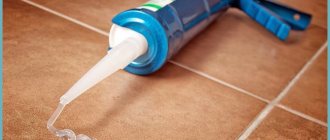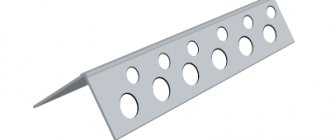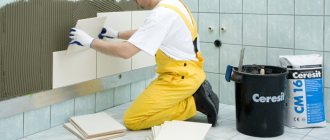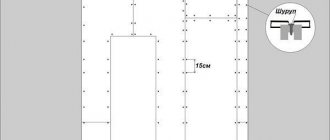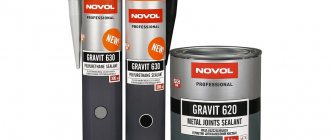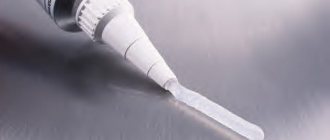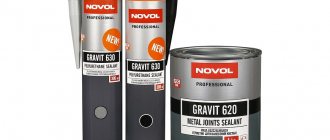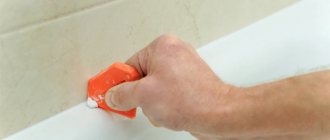Even if such an annoying nuisance happens as an aquarium breakdown, this does not mean that you need to immediately buy a new one. Modern means available on the market allow even a novice aquarist to cope with this problem.
Today there are enough sealants that will help you quickly and reliably repair an aquarium at home and avoid leaks in the future.
The only requirement should be that the sealant is safe for plants and fish. To do this, they must meet certain characteristics.
General requirements for sealant
Any adhesive compositions will work for gluing ordinary household glass, but for aquarium glass you need to choose a special product. Any glue will not work, since aquarium glass has a number of features.
- The bottom and walls experience quite a lot of pressure, especially if the product holds a volume of water of three hundred or more liters. In this regard, the joining seams must be elastic enough not to crack, and completely sealed to withstand the pressure of water masses.
- In addition to water, the joints will be affected by the environment: outside air, temperature fluctuations, ultraviolet rays. Not every adhesive composition will withstand this.
- Aquarium inhabitants: fish, aquarium plants, snails are very susceptible to the chemical components in the glue and this can lead to their death. For example, a sealant with bitumen additives can poison residents. Polyurethane glue will achieve the same result.
The question immediately arises - how to choose the right sealant for these purposes? To do this you need to pay attention to:
- absence of toxic substances such as antibiotics, fungicides, acids, alkalis and dyes;
- How reliable is the adhesive solution and what is the degree of adhesion relative to glass and plexiglass (the material from which the aquarium is made);
- how elastic it is and can adapt to environmental conditions;
- water resistance.
Based on the above, silicone sealant is suitable, which is recommended for use by experienced aquarists.
Silicone glue
The base is silicone rubber, made from solid silicon. In addition to the polymer, the product includes:
- vulcanizer (promotes material viscosity);
- adhesive component (provides adhesion to the surface);
- plasticizer (gives the mixture elasticity);
- dye (gives the glue color);
- amplifier (helps increase the strength of the composition.
Aquarium silicone must be plastic, moisture-resistant and quick-drying.
Advantages
- Versatility. Suitable for gluing glass and plexiglass tanks that will house fish, snakes, snails and other aquatic inhabitants and reptiles.
- Safety. Does not contain toxic components and is harmless to living organisms.
- High strength seams. To separate the glued parts, it is necessary to apply a force of at least 200 kg.
- Elasticity. High-quality silicone sealant does not crack or crumble even after prolonged use.
- Variety of colors. You can buy black, white or colorless sealant in stores.
- High adhesion characteristics.
- Water resistance.
- Heat resistance.
- UV resistance.
- Long service life.
- Convenient release form for use.
Varieties
- Acid. Silicone-based compositions with acid polymerization have a strong vinegar odor that appears during the hardening process. Work with them is carried out in a respirator. The packaging is marked “A”. The glued container can be used only after the vapors have evaporated and been thoroughly washed.
- Neutral. Doesn't smell, dries quickly, but more expensive than acidic. Does not contain dyes and repels them after drying. Retains properties at t=-70…+70 °C. A durable, moisture-resistant and elastic seam is formed. Does not adhere to the old layer of sealing compound. Before gluing, the surface of the glass should be thoroughly cleaned.
Black silicone
Black sealant is mistakenly considered more durable and reliable, but in practice only its appearance is improved.
After drying, it forms an attractive seam of the correct geometric shape. Looks especially impressive on large tanks.
Transparent silicone
A colorless sealant will visually make the container lighter and invisible, but over time the seam may become colored under the influence of fish food and medications added to the water. On a transparent seam, the remains of algae and plaque will be more clearly visible. This glue is best used in small containers.
Types of sealants
Depending on the composition, sealing agents are divided into acrylic, silicone, thiokol, polyurethane, etc. The product should be based on silicone, since other types can be harmful to the inhabitants of the aquarium.
The products are divided into one-component and two-component. The first remedy is more universal and does not require special preparation. The second will need to be prepared by first connecting a number of components.
Small cracks that do not pass through can be sealed with another type of sealant. The exception is acrylic, because it is not moisture resistant and has weak adhesive properties.
You can use butyl compounds, which will help cope with minor defects, but their strength is still reduced.
A broken aquarium must be freed from sand, water stones and other decorative elements, dried thoroughly and glued with epoxy glue, or use “cold welding”. The compositions are safe for fish and vegetation, but you cannot do without emptying the container.
Kinds
Depending on the number of components included, sealants can be one-component or two-component.
- One-component (ready to use immediately). Practical and more popular among users.
- Two-component. To prepare, you must mix the active component with a waterproof adhesive sealant.
The composition of the sealant is:
- polyurethane;
- polysulfide;
- bituminous;
- acrylic;
- thiokol;
- silicone;
Compositions of types 1-3 are too toxic, so they cannot be used in aquariums. Remedies 4 and 5 against contact with water are quickly destroyed. Thus, only silicone sealant is suitable for repairing an aquarium.
Features of choice
When purchasing, pay attention to what type of sealant is - acidic or neutral. The acidic one is marked with the letter “A” on the tube and has a strong vinegar smell.
Neutral has no odor and is perfect for repairing an aquarium at home.
It costs more than acidic and cannot be too cheap. These funds have:
- durability, elasticity and moisture resistance;
- tolerate temperature fluctuations well within the range from -70 to +70C;
- cannot be painted; paint does not stick to seams;
- You cannot apply a new layer without removing the previous one, so you must first clean the surface.
“Pay attention to the color of the sealant you purchase. It’s better to buy colorless ones, but don’t buy colored ones with artificial pigments. Look at the remaining shelf life, this is quite important.
The instructions should also contain a note about the possibility of using this type of glue for aquariums and its safety.”
Varieties of silicone
Varieties of silicone mixtures are divided into acidic and neutral. The former are distinguished by a characteristic sour smell, and there is a letter “A” on the packaging. Neutral adhesives have no aroma, therefore they are freely used in the aquarium hobby for repairing tanks due to the following qualities:
- Durability, moisture resistance, elasticity and stretchability.
- Retains quality at temperatures from -70C to +70C.
Before gluing a glass aquarium, you should know that the paint is not applied to the dried layer of silicone, but rolled up. In addition, a new layer cannot be applied to the previous one, as it will fall off. When repairing a tank, first clean the old sealant film, and then, having previously degreased the glass, apply a fresh layer.
Properties and composition of silicone sealant
Silicone sealant (silicone) is used in the construction and household sectors due to its practicality. The composition is based on synthetic rubber, which provides excellent durability. The glue is additionally strengthened with modifiers and plasticizers.
Please note that they are sold clear and dyed. The composition must contain a vulcanizer. A substance necessary to convert the paste into a sufficiently elastic material and adhesive substances that strengthen the connection.
How to choose
When choosing a sealant, you need to consider the following factors:
- Does it contain harmful substances?
- What color is the composition?
- How long does it take for aquarium sealant to dry?
- Does it contain dyes?
- Is there a “For aquarium” mark on the packaging?
You need to buy a composition for working with an aquarium in trusted stores that can provide documentation for the product. If you accidentally come across a fake, you can lose your fish or significantly spoil the appearance of the tank.
You need to look at the expiration date. When it’s running low, it’s better not to buy it, because the sealant loses its quality over time. For aquariums, you need to buy only high-quality, fresh, properly packaged glue.
Black silicone
Some believe that the black color used in the product gives it greater strength and durability, the ability to withstand more loads.
However, in terms of composition and adhesive properties, it is no different from the others, and the color color is just an aesthetic indicator.
When applied, a seam of this color looks more attractive and gives the correct geometry to the aquarium. Particularly effective on large aquariums.
Brief overview of sealants
Construction markets and stores, as well as online sites, offer sealing mixtures from various companies. I would like to highlight among those in demand.
MOMENT
is engaged in the production of special compositions for aquariums that contain 100% silicone polymer. The advantage of this specimen is the absence of solvents.
Moment
Has high strength. The sample is capable of withstanding tensile strength up to 2.3 MPa. Resistant to direct sunlight, temperature changes, vibration fluctuations. Suitable for use in containers filled with salt water where marine fish live.
KRASS
An inexpensive option for a sealant, the volume of which does not exceed 300 milliliters. The manufacturer of these products is located in Poland. The sample has a sufficient degree of elasticity. The downside of the product is the release of vinegar vapors when the components of the mixture are activated.
The manufacturer indicates that the product is absolutely safe, but it is better to limit yourself to using a neutral sealant.
Advice! You should not use Moment when sealing containers exceeding a volume of 100 liters. This can cause the formation of ruptures and defects.
DOW CORNING 7093
Refers to neutral, one-component compositions. Non-toxic, does not emit an unpleasant odor when dried. It resists mechanical, chemical and ultraviolet influences well. Has a long service life. For the sample to begin to harden, it is enough to wait 20-30 minutes.
Capable of maintaining its qualities in a temperature range from -50 to +180 0. The tensile tests carried out gave results of 1.7 MPa. The cost of the product cannot be called low.
TYTAN
This sample is capable of creating a strong, durable seam that is leak-proof and durable. Working with sealant from this manufacturer is simple and does not cause any difficulties. The mixture contains no solvents and is therefore non-toxic.
TYTAN
Tests carried out in laboratory conditions showed that Titan sealant has a tensile strength of 0.55 MPa. It does not harden very quickly - 3 millimeters per day. Retains its qualities at temperatures from -50 to +180 0.
SOUDAL
Sealing agents presented by the Belgian manufacturer are offered in a large assortment on the markets. One of these is a sample for treating aquariums. Refers to single-component products that do not emit hazardous substances.
SOUDAL
The elasticity of the product allows it to withstand heavy loads. Ease of use and moisture resistance put the product in the category of demand. The drying process is quick, and the coating retains its original appearance for a long time. Another advantage is the absence of toxic substances. SOUDAL sealant is in demand among aquarists.
Advantages of silicone aquarium sealants
Silicone-based adhesives are recommended for repairing terrariums, aquariums and other transparent containers as they are harmless and non-toxic.
When working with the composition, you do not need to use any special protective equipment, because they do not release toxins.
To determine the drying time of the sealant, you need to check the attached instructions. Basically, the time does not exceed twenty minutes and the product can be used within a day.
A number of other advantages of the product:
- the seam is strong enough because it can withstand mechanical stress weighing more than two hundred kilograms;
- good elastic connection that does not crack over time;
- ease of use and durability.
If the store does not have special aquarium sealants, they can easily be replaced with ordinary silicone glue for dishes and pipelines only without fungicidal and antimicrobial additives.
Benefits of silicone
Silicone aquarium sealant has gained respect and popularity in the aquarium hobby due to its many advantages:
- Environmental safety - the mixture contains harmless components that will not cause harm to underwater inhabitants. Also, the adhesive mixture does not release toxic substances into the aquatic environment.
- Reliability and durability - these advantages of silicone varieties have been tested in practice by many aquarists. Seams made with silicone are strong: according to research, a force of 200 kg must be applied to destroy a seam.
- Water Resistant – Of course, silicone tank adhesive is water resistant, so you won’t have to worry about the seams coming apart.
Many fish holders are interested in how long silicone for glass takes to dry. The glue ossifies in 20 minutes, and it takes a day to completely seal. The time may vary from company to company, so you should look at the packaging and instructions before use.
Popular manufacturers
You can find a wide variety of sealants on store shelves. They differ mainly in price, quality and composition. Let's look at some brands.
- "Chemlux 9013" is an instant remedy that is durable, durable and can be stored open. The tube is enough for a three-hundred-liter aquarium.
- “Moment Guarantor” - consists entirely of silicone. Ideal for all aquarium containers and has good contact with seawater. The seams are sealed and can withstand vibration. It can be used on laminated or glazed glass.
- "Soudal AQ" is a Belgian product that is harmless to aquatic life. In addition to glass, it reliably bonds plastic, wood, ceramics and metal. Water resistant.
- KimTec is a water-resistant product that, when exposed to air, becomes a soft, elastic rubber that can withstand aggressive environments. Suitable for aquarium containers for various purposes, as well as decorative and artistic glass objects.
- “Krass” is an elastic and moisture-resistant sealant mainly used for repairing the external sides of the aquarium. It contains acids, which gives it a sour smell, so the product is left for a day in a room with good ventilation.
- “Titan” is a high-quality elastic Polish product that does not harm fish and shellfish.
Sealant manufacturers
Retail chains offer an impressive range of sealants, but aquarists use proven products.
A few famous brands:
- Okyanus Kimya. Silicone sealant is suitable for finishing work, as well as for repairing and making aquariums. The paste provides an elastic connection that is resistant to temperature changes, durable and reliable.
- Tytan is a Polish-made product characterized by the highest quality. It is waterproof and sets quickly. Harmless to aquarium inhabitants. Reliable even for the construction of the largest tanks. The disadvantage of this sealant is that it is expensive, at least 300 rubles for a 290 ml tube.
- Ceresit is a joint product from manufacturers in Russia and Germany. Meets the requirements for silicone sealants. It has a shorter shelf life compared to imported samples, but is better in price.
- Soudal is a Belgian brand. Soudal AQ is a one-component silicone specifically for aquariums, environmentally friendly and safe for fish. Easy to use, dries quickly, and does not lose its properties for a long time. According to consumer reviews, it is considered one of the best among silicone sealants.
- Germent is a good analogue of domestic production. It has increased resistance to sunlight and exposure to the aquatic environment. Among the positive qualities are elasticity and tightness of seams, even in those objects that are subject to vibration.
Aquarium sealants ensure structural reliability and prevent possible leaks. You should not save on adhesive products, because low-quality materials can harm the health of people and pets. If you liked the article, leave comments and share a link to it on social networks.
Bonding and repairing an aquarium
Repairing an aquarium at home will not cause difficulties if you follow some rules:
- cover the work surface with a protective film;
- use masking tape, moving away from the edges, to protect the glass parts of the aquarium;
- treat the areas to be glued with a degreaser, acetone or alcohol;
- Apply the sealant in a thin layer and carefully level it;
- connect the walls of the container with the bottom in the following sequence: first the front wall, then the right, then the left and finally the back;
- fix the product for the period specified in the description using any tightening means;
- Before the glue dries, remove excess glue with a construction scraper;
- After drying time (approximately 24 hours), fill the container with water, check if the seams are leaking and drain the water.
“If used glass is used when creating an aquarium, they must be thoroughly cleaned of previous adhesive sealants using acetone and a sharp scraper.
Only dry parts are treated with sealant, otherwise the connection will be of poor quality.”
What to do with a cracked aquarium? The order is:
- inspect the leak site and remove condensate;
- move fish and ornamental plants to another place and pour out the liquid;
- dry the cracked area and degrease it;
- seal the defect with sealant and carefully level the seam at the gluing site with a spatula;
- wait until completely dry.
What should aquarium glue be?
The sealant should solve a number of problems. This may be the need to eliminate leaks, or create relief on the bottom surface. It must be suitable for fixing walls and decorative elements. Not every store-bought sample is suitable for these tasks. Let's consider the requirements that must apply to the sealing composition:
- Harmlessness. The requirement is basic. The release of harmful substances into the water will lead to the death of fish and plants. Analyzing the compositions of various types of sealants, we can come to the conclusion that bitumen and synthetic mixtures are not suitable for repairs.
- Elasticity. This characteristic allows it to withstand high pressure exerted on glass walls. The use of mixtures with poor elasticity will lead to cracking of the glass.
- No antiseptics. Some types of sealants are supplemented with antibacterial components that prevent the appearance of mold and fungal deposits. Such substances have a bad effect on the health of living organisms.
- No dyes. They also have a bad effect on the general condition of aquatic inhabitants.
- Reliability. Must withstand high loads throughout its service life.
The appearance of bubbles - control measures
Sometimes inaccurate gluing of surfaces leads to the entry of air and the formation of bubbles.
By adding a little sealant to the seam and tightening the parts tightly, they can be eliminated. The air gap can be removed with a rubber spatula. If a problem is detected when the silicone has already set to the surface, it is enough to pierce the bubbles with a needle.
If the seam turns out to be mostly of poor quality, then it is better to re-glue it.
Tips for working with glue
- Remove old glue with a razor blade. Be prepared for the process to take a long time.
- Use a tie to better secure opposing panes of glass and provide additional support.
- Drain the water, remove the soil and decorations. Replant the fish even if you are repairing a crack in the top of the aquarium.
- If the glass is damaged from above, use a glass cover coated with glue.
- Check the bond strength after the aquarium is completely dry by filling it with water. Any leaks in the aquarium indicate that you need to seal the leaking areas well with sealant or redo the work.
How to properly glue an aquarium
Rules for using silicone when gluing fish tanks:
- The glass is taped around the perimeter. This will make the seams correct and protect against contamination.
- Surfaces are degreased. Regardless of the manufacturer, the instructions indicate that before gluing the seams must be treated with an alcohol-containing solution or acetone. White alcohol can also be used. After wiping the surface, you need to make sure that there are no lint left from the fabric at the joints.
- A beacon is placed. This is necessary to obtain seams of the required thickness. Apply a small drop of glue in each corner. When it dries, this will be an example of thickness.
- Application of silicone. The product is gently and evenly squeezed onto the glass, then the surfaces are joined. After half an hour, you can move on to the next section, making an interval each time so that the glue has time to set.
When you need to repair the tank by sealing the crack, you need to remove the fish, drain the water and dry the container. The surface is degreased in the same way. You need to drop a little product into the crack that has formed and push it, repeating in both directions. Excess material is carefully removed with a rubber spatula.
Reference! Quite often, the leak is not a leak, but rather condensation. Therefore, before relocating fish, you should carefully inspect the area of the possible crack.
Recommendations when working with silicone glue for aquariums:
- Each time before application, you need to clean and degrease the surface.
- Excess material is removed with a spatula and a rag soaked in vinegar.
- When working with sealant for the first time, you should choose a transparent composition.
- There is no need to apply the sealant layer by layer, the second layer will disappear.
- Silicone cannot be painted, so black or transparent is chosen for the aquarium.
- Even if a crack appears in the upper part, the fish still need to be removed.
- The seams should be cleaned periodically to remove plaque.

